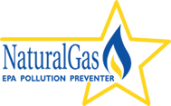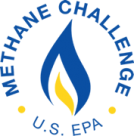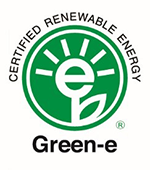Iroquois Operations and Sustainability
We are committed to doing our part to protect the environment. This commitment includes reducing our operation's greenhouse gas emissions and looking for ways to partner with renewable energy sources, all while continuing to transport clean and efficient natural gas.
Interstate Natural Gas Association of America
 As an active member of the Interstate Natural Gas Association of America (INGAA), Iroquois and other association members have an ongoing history of working with regulators to ensure that natural gas pipelines, compressor stations and storage facilities are designed, built, and operatein ways that minimize GHG emissions.
As an active member of the Interstate Natural Gas Association of America (INGAA), Iroquois and other association members have an ongoing history of working with regulators to ensure that natural gas pipelines, compressor stations and storage facilities are designed, built, and operatein ways that minimize GHG emissions.
Iroquois participated in the development of the 2021 INGAA Climate Report that documents members’ commitments to address global climate change and highlights their collective efforts. This report builds on INGAA's 2021 Vision Forward: Our Clean Energy Commitments, adopted by INGAA membership.
As part of Iroquois’ sustainability commitments, the company completed leak surveys at each of its seven compressor stations in 2022. We continue to collaborate with INGAA, and others, on the research and development of effective practices to improve leak detection methods and reduce GHG emissions and we will continue to report our progress as we further diminish our emissions.
Natural Gas Star Program
 For more than two decades, Iroquois participated in the U.S. Environmental Protection Agency’s (EPA) Natural Gas Star Program, a voluntary government/industry partnership, until the program was retired in 2022. Under the program, Iroquois implemented several activities and methods that reduced methane emissions during regular operating and maintenance practices.
For more than two decades, Iroquois participated in the U.S. Environmental Protection Agency’s (EPA) Natural Gas Star Program, a voluntary government/industry partnership, until the program was retired in 2022. Under the program, Iroquois implemented several activities and methods that reduced methane emissions during regular operating and maintenance practices.
These measures, which remain in place, include:
- Direct inspection of above ground facilities.
- Installation of turbines with electric starters instead of reciprocating engines.
- Installation of low, no bleed-pneumatic devices to regulate gas flows and pressure.
- The use of isolation valves at compressor stations, which minimize blowdowns to sections of the compressor station instead of the entire station.
- During pipeline inspection activities, rather than venting natural gas into the atmosphere, it is transferred and used as a fuel in the equipment utilized to complete the inspection.
- Reducing the pressure of the pipeline before conducting blowdowns so that the amount of gas released into the atmosphere is decreased.
 U.S. Environmental Protection Agency Methane Challenge Program
U.S. Environmental Protection Agency Methane Challenge Program
In 2020, Iroquois joined the EPA’s voluntary Methane Challenge Program and committed to reduce pipeline venting between compressor stations (including venting at tie-ins and meter stations, and through maintenance activities) 50% by the year 2025.
The company first reported its progress in 2022 and is on course to meet its goal by 2025.
Utilization of 100% Certified Renewable Electricity
 Iroquois is committed to running its business in the most efficient and environmentally conscious way possible. As part of this promise, we have committed to 100% renewable electricity for our Connecticut and New York facilities through the purchase of Green-e® Certified Renewable Energy Certificates (RECs).
Iroquois is committed to running its business in the most efficient and environmentally conscious way possible. As part of this promise, we have committed to 100% renewable electricity for our Connecticut and New York facilities through the purchase of Green-e® Certified Renewable Energy Certificates (RECs).
The renewable electricity, produced through wind power that is generated across the U.S. for our 46 New York and 29 Connecticut-based accounts, has been certified by Green-e®, the nation’s leading voluntary certification program for renewable energy.
Our decision to have our electric supply come from a certified renewable source reflects our sense of great responsibility to do our part to protect the environment, while also knowing that this green energy is a sustainable, accessible and affordable option for our business.



